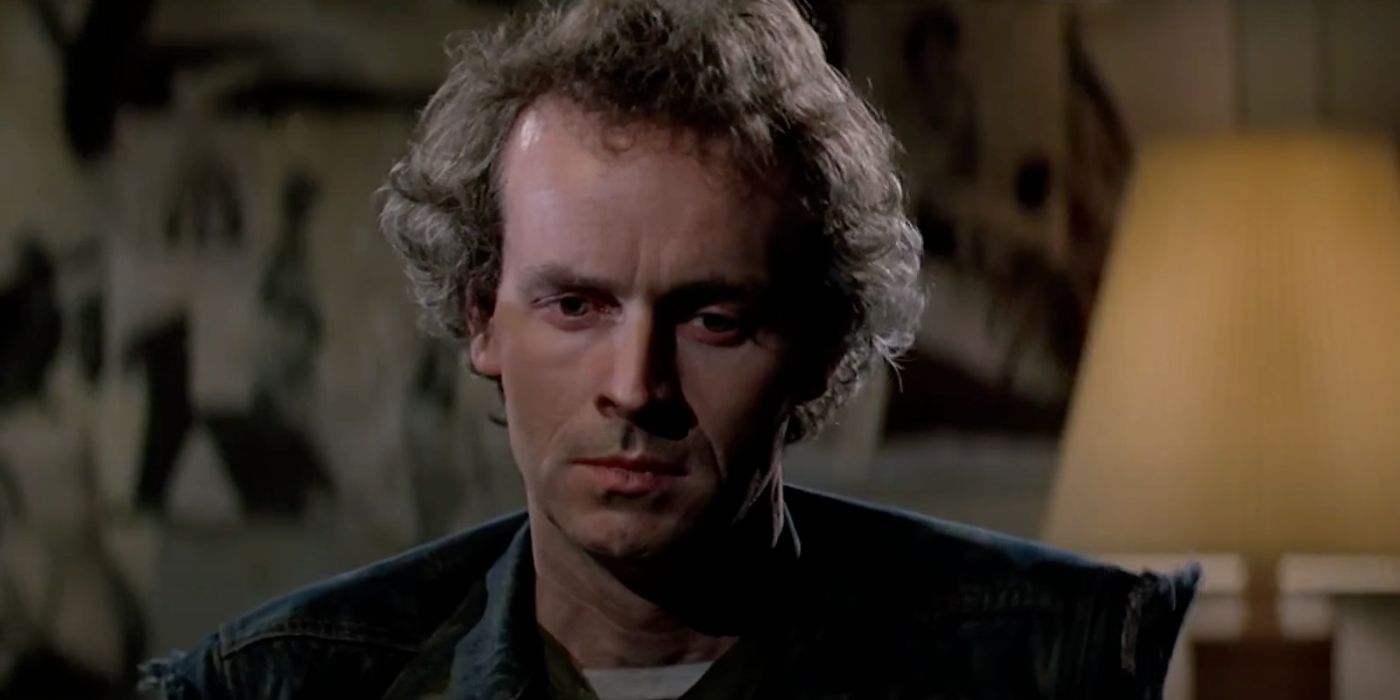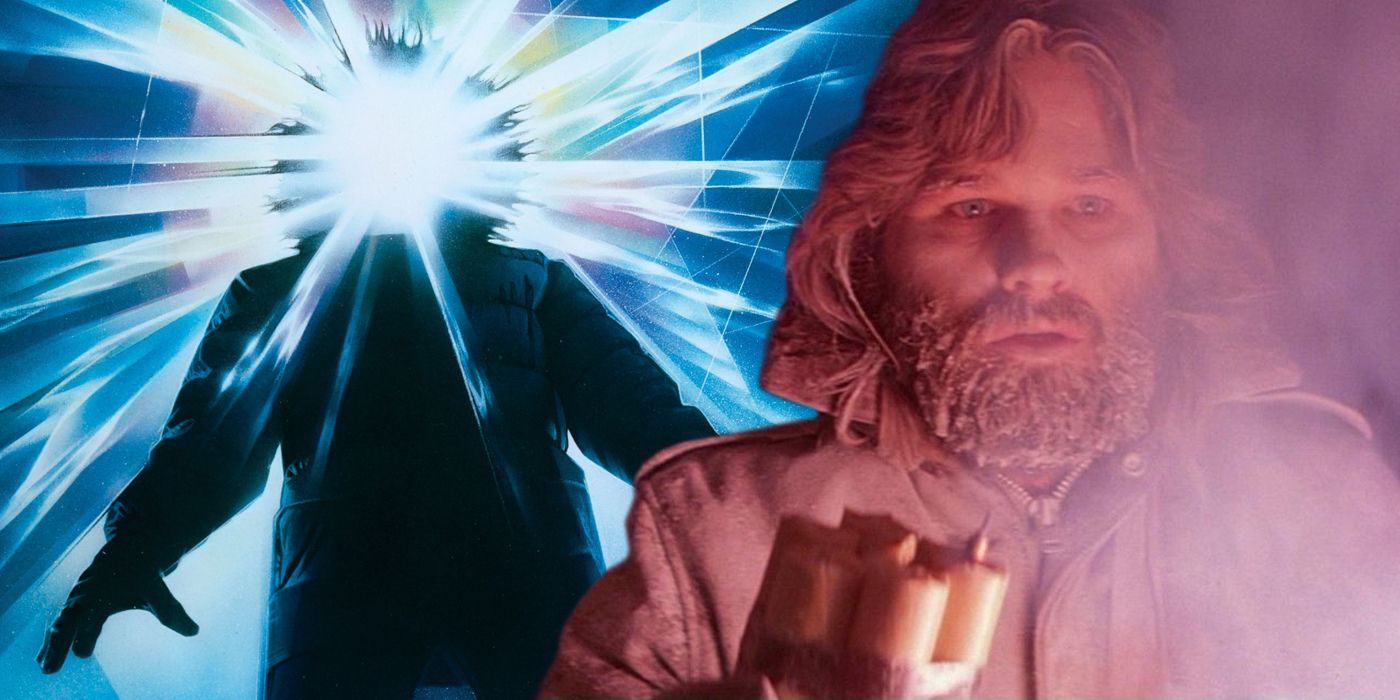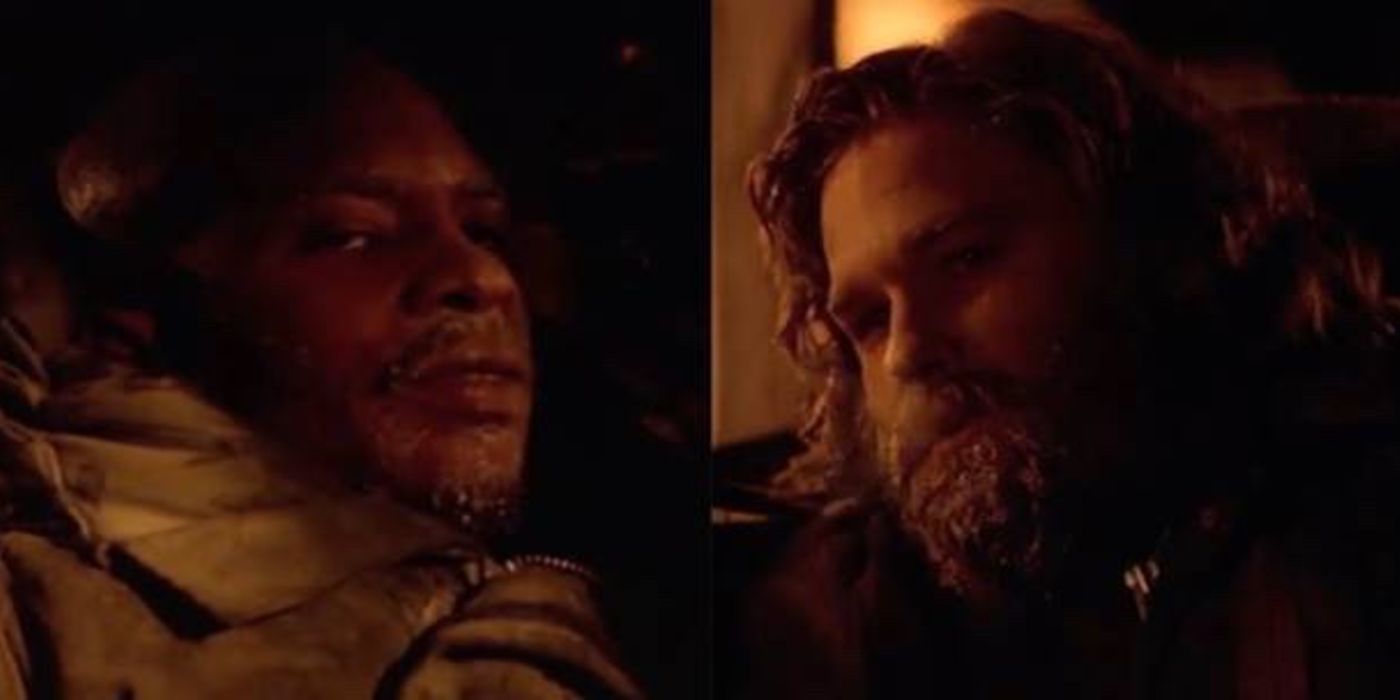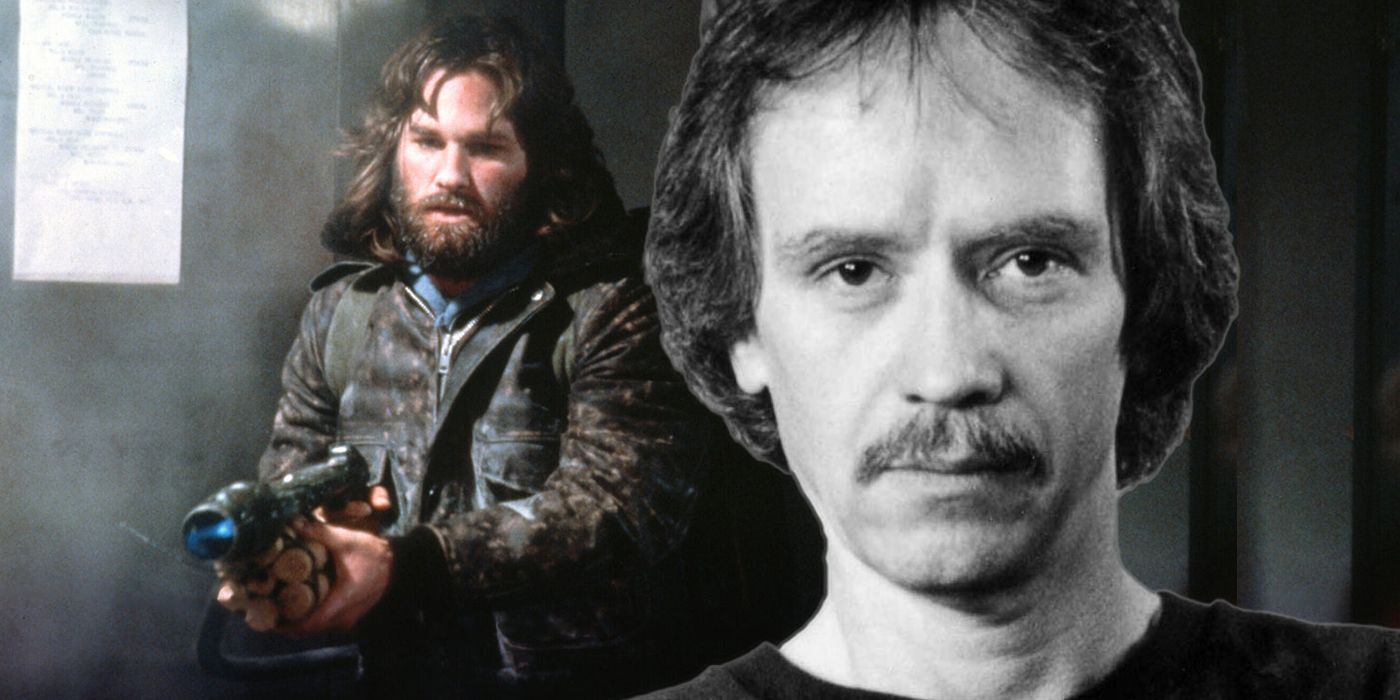The Thing’s eye gleam theory can supposedly reveal which characters are alien imitations, but how effective is this method in practice? The original The Thing from Another World is one of John Carpenter’s favorite movies, which is why he was reluctant to helm a remake when first approached. However, the original movie dropped the imitation element that was present in the original short story Who Goes There? in favor of a more generic alien monster. Carpenter decided the alien shapeshifter concept was the perfect way to reinvent the concept, and was determined the monster itself would rarely, if ever, be depicted onscreen as a man in a creature costume.
Rewatching John Carpenter’s The Thing always seems to yield new clues or details, but a big one eluded even ardent fans for decades. It was only when the movie’s director of photography Dean Cundey mentioned it during a 2016 commentary that the “eye gleam” clue came to light. Cundey revealed that during the filming of the famous blood test sequence, he and Carpenter came up with a way to hint at the humanity of the characters. The human ones still have light in their eyes, while the sole imitation’s eyes have no light whatsoever.
The Thing Theory Claims You Can Tell Who’s Infected Via Their Eyes

While the titular creature can copy other lifeforms exactly in the Kurt Russell horror movie, at the end of the day, they’re still Xeroxes lacking in any fundamental humanity. Removing the light from their eyes is a subliminal clue and one that goes over the heads of the majority of viewers. Naturally, fans soon rewatched Carpenter’s film with this concept in mind, hoping to catch hints about the imitators hiding out among the crew of Outpost 31.
Of course, it should be noted the eye gleam concept was only designed for the blood test itself. This was something Cundey and Carpenter came up with while discussing how to shoot the scene, and wasn’t part of the DoP’s lighting plan for the rest of the project. Those hoping that The Thing’s ending – where Russell’s MacReady and Keith David’s Childs sit among the burning ruins of the camp – also used the eye gleam to hint at which character could be infected will be disappointed.
In the aforementioned commentary, Cundey confirmed he and the director discussed reusing the light in the eyes trick, only to dismiss it. Carpenter wanted the ending to be intentionally ambiguous, and audiences not to know which character is infected. Likewise, fan theories that Childs is a copy because he has no visible breath are easy to dismiss too as his breath can be seen, it is just not as visible as MacReady’s.
Who’s A Monster In The Thing Based On The Eye Gleam Theory

The Thing’s blood test scene involves MacReady tying up the remaining survivors of the camp, and taking a sample of their blood. Having seen the way the individual pieces of the imitations try to save themselves when attacked, MacReady argues that the creature’s blood itself would react if provoked, so he heats a needle and sticks it into each blood sample to test his theory.
After a long, tense build-up, the only sample that responds belongs to Palmer (David Clennon), who quickly turns into a monster. In the lead-up to this reveal, it’s possible to see an eye gleam for every other character, including Childs and Garry (Donald Moffat). Palmer is the only one with dark eyes throughout, and in fact, his eyes are the first things to be destroyed once he starts transforming into a new, monstrous shape.
Does The Thing’s Eye Gleam Theory Actually Hold Up?

The Thing’s eye gleam theory might be popular, but it doesn’t hold up to scrutiny outside the blood test scene. During the scenes that reveal characters like Wilford Brimley’s Blair is infected, there’s light clearly seen in his eyes, with the same thing being true for Norris (Charles Hallahan). Within The Thing itself, there’s ambiguity as to when certain characters have been infected, which like translated to filming too.
For instance, it’s been suggested that Blair himself was one of the first characters taken over by the alien. His actions in trying to warn the men about the monster may have been a ruse to get himself isolated and locked away, so he could work on building an escape plan in secret. However, it’s entirely possible he was human until he was locked away, with one of the other copies infecting him later. Either way, there is light in Blair’s eye throughout the film, so the eye gleam theory is no help in his case.
There’s also faint light in Child’s eyes during the movie’s ending, which depending on how seriously one takes the theory, could actually be proof of his humanity. Carpenter has claimed only he knows for sure who is human and who’s a copy in the final scene, though intriguingly, he stated the opposite in a commentary for The Thing. While speaking with Kurt Russell on the topic, Carpenter revealed he could never decide for sure if Childs was infected or not in the finale.
What The Thing’s Crew Have Said About The Eye Gleam Theory

Cundey was the one who kicked off the eye gleam chatter, which has since taken root within the movie’s fanbase. Carpenter himself finally commented on it during an interview with ComicBook.com while promoting his series John Carpenter’s Suburban Screams. The director was specially asked as to whether it could be used to find out who is human in the ending, but Carpenter dismissed the notion, stating Cundey has “no clue” and even teasingly stated “You tell him that. Tell him he’s full of s***.”
It’s tricky to find members of The Thing’s cast and crew who’ve discussed the eye gleam issue in any great depth, but Carpenter’s comments are kind of the final word on the subject. While it adds a fascinating extra element to the blood test – which is all about the human characters finally turning the tables on the creature – it shouldn’t be regarded as a cheat sheet for identifying the other imitations earlier in the story.




